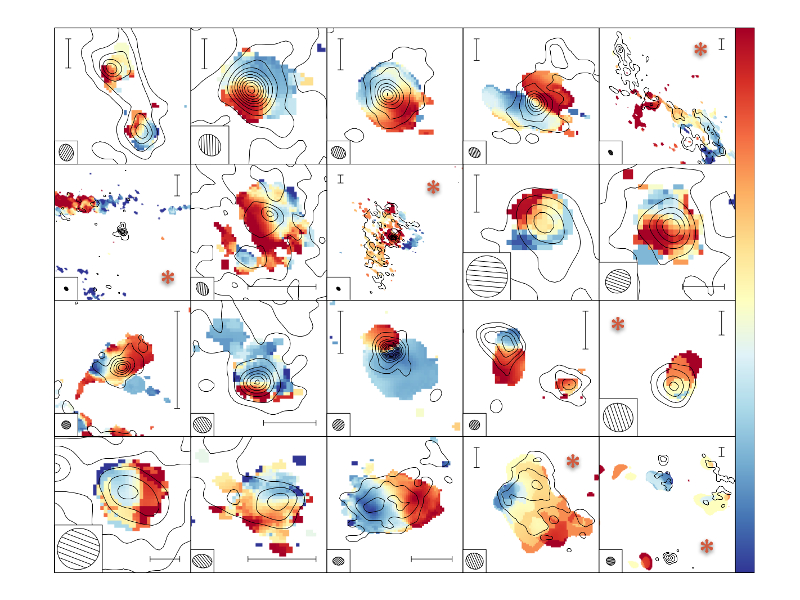
|
EPoS |
|
EPoS Contribution
|
|
Core Fragmentation and Disk Stability in High-Mass Star Formation: The W3(H2O) Archetype and Beyond
Aida Ahmadi MPIA, Heidelberg, DE | |
| The fragmentation mode of high-mass molecular clumps and the properties of the central disk-like structures surrounding the most luminous objects have yet to be comprehensively characterised. Using the IRAM NOrthern Extended Millimeter Array (NOEMA) and the IRAM 30-m telescope, the CORE survey has obtained high-resolution (~0.3") observations of 20 well-known highly luminous star-forming regions in the 1.37 mm wavelength regime in both line and dust continuum emission (see Fig. for an overview). I will present our findings on the kinematics of these structures, with a focus on the W3(H2O) star-forming region as an archetype. At ~0.35" (700 AU at 2.0 kpc) resolution, the W3(H2O) clump fragments into two cores, separated by 2300 AU, in both line and dust continuum emission. Velocity gradients of a few km/s are observed in the dense gas tracer, CH3CN, across both cores, perpendicular to the directions of two bipolar outflows, one emanating from each core, making the case for the existence of disks within these cores. The two rotating structures appear to be Toomre unstable close to their outer boundaries, with a possibility of further disk fragmentation in the differentially-rotating core to the west. Rapid cooling in regions that are Toomre unstable supports the disk fragmentation scenario. Hence, using W3(H2O) as an archetype, we show that different fragmentation processes can contribute to the final stellar mass distribution within a single region, with core fragmentation on large scales and disk fragmentation on smaller spatial scales. Preliminary results on the full sample will also be presented. | |
 | |
| Caption: Intensity-weighted peak velocity (first moment) map of CH3CN (12-11) K=3 in colour, overlaid with 1.37 mm continuum contours, for the sample of 20 high-mass star-forming regions observed as part of the CORE survey. The panels denoted with an asterisk show the first moment map of H2CO in colour. The length of the scale bars corresponds to 3000 AU, and the synthesized beam is shown in the bottom left corner of each panel. Velocity gradients are observed around most sources. | |
| Collaborators: H. Beuther, MPIA, DE J. C. Mottram, MPIA, DE F. Bosco, MPIA, DE and the CORE team |
Suggested Session:
High-mass star/star cluster formation |